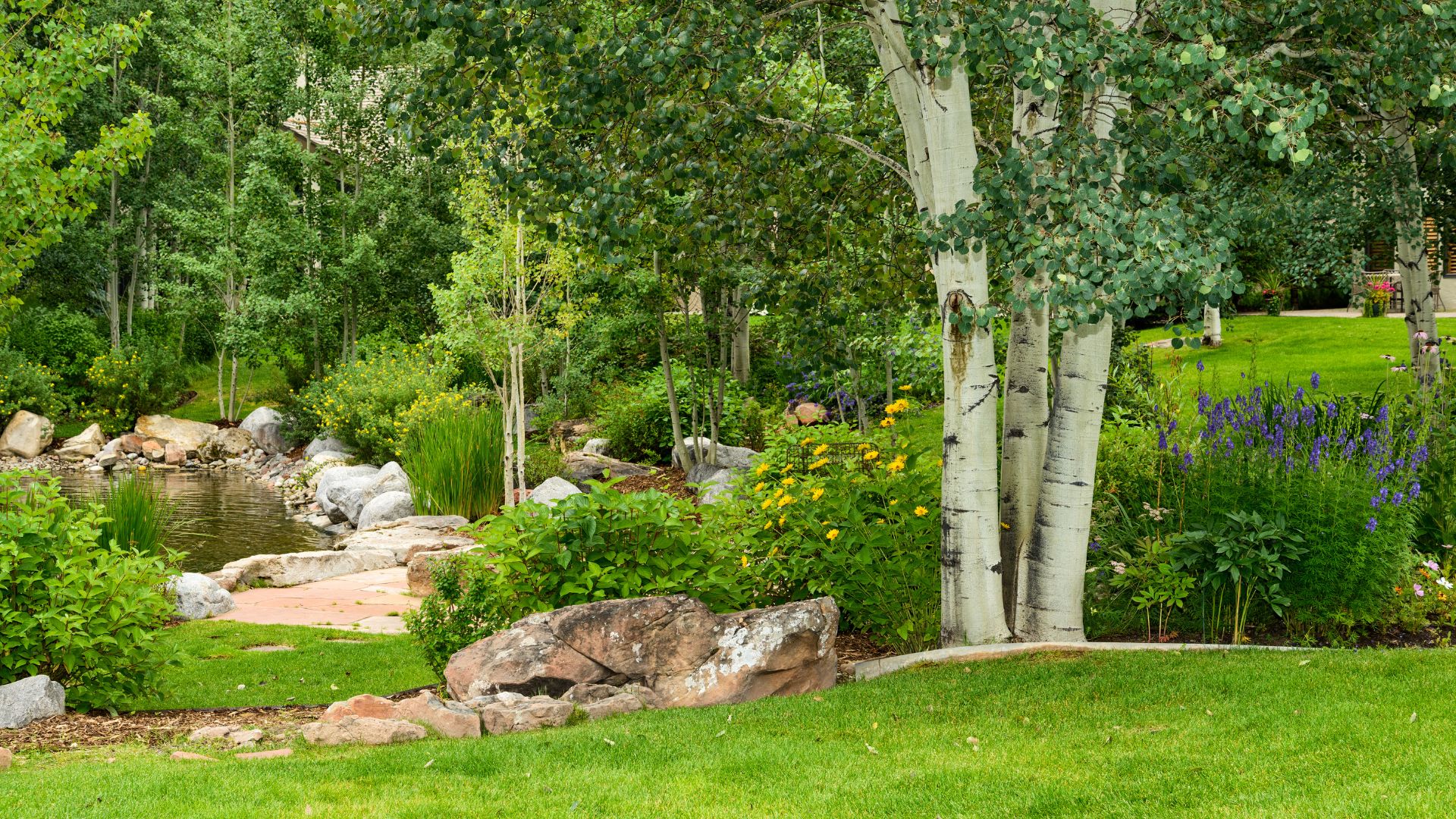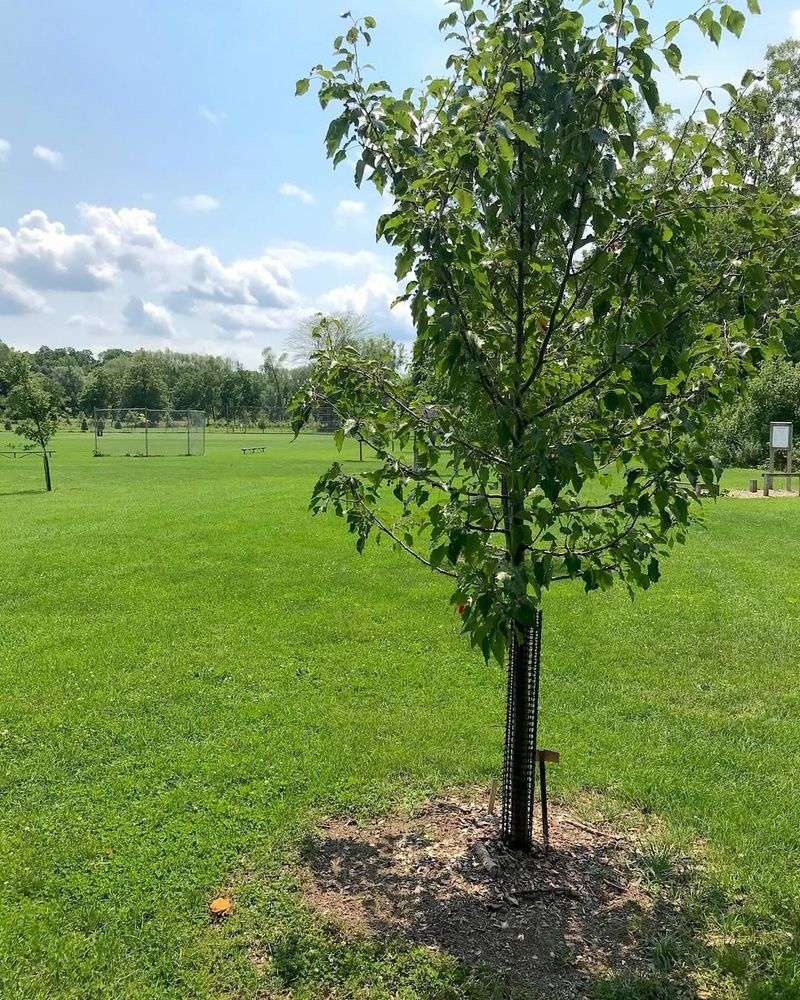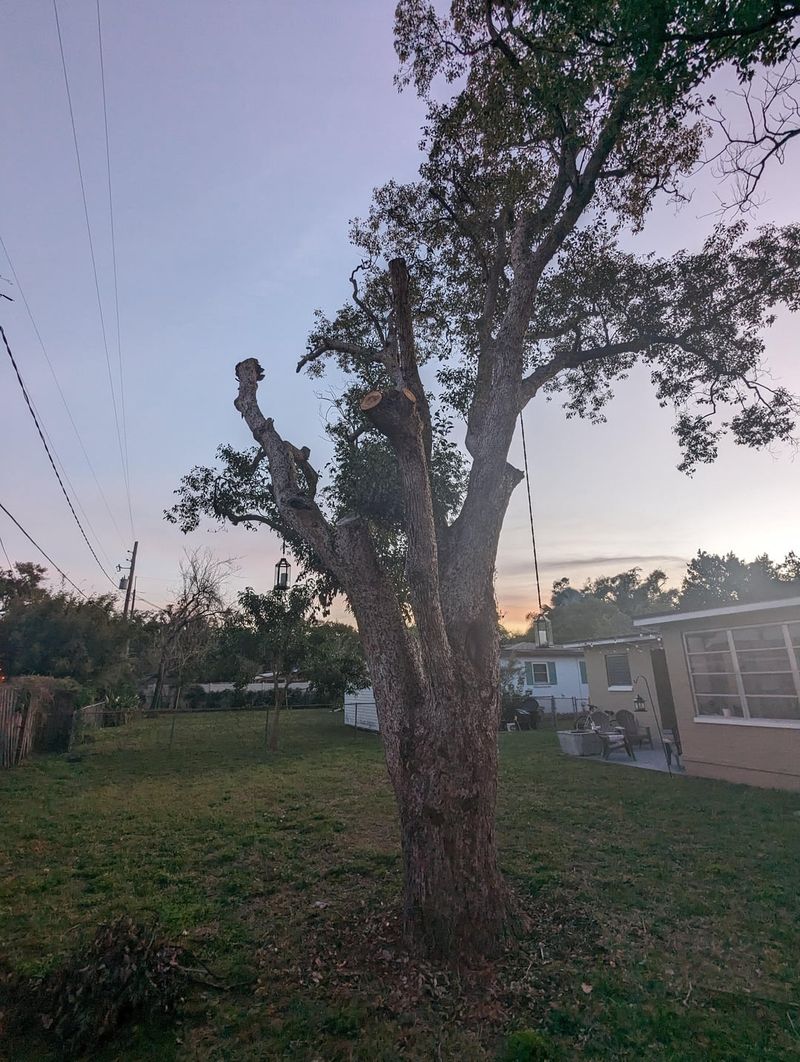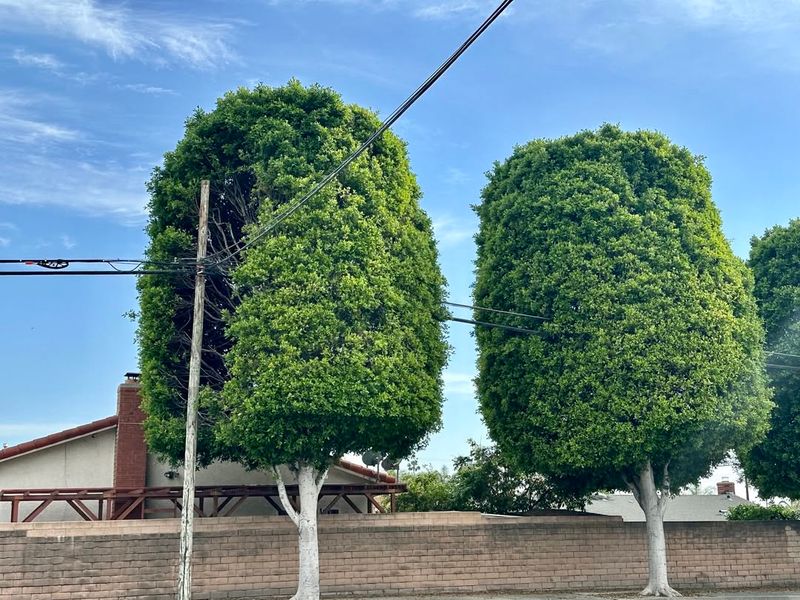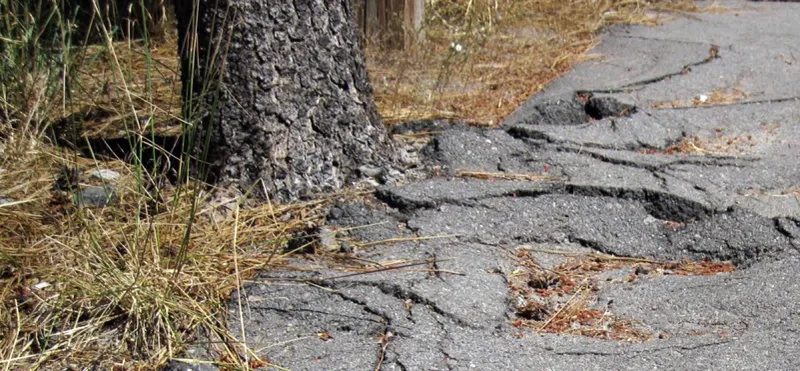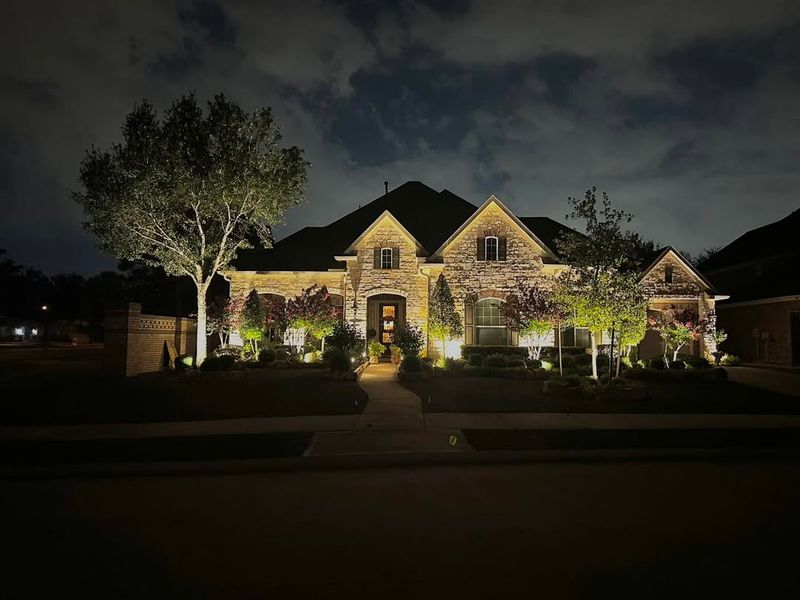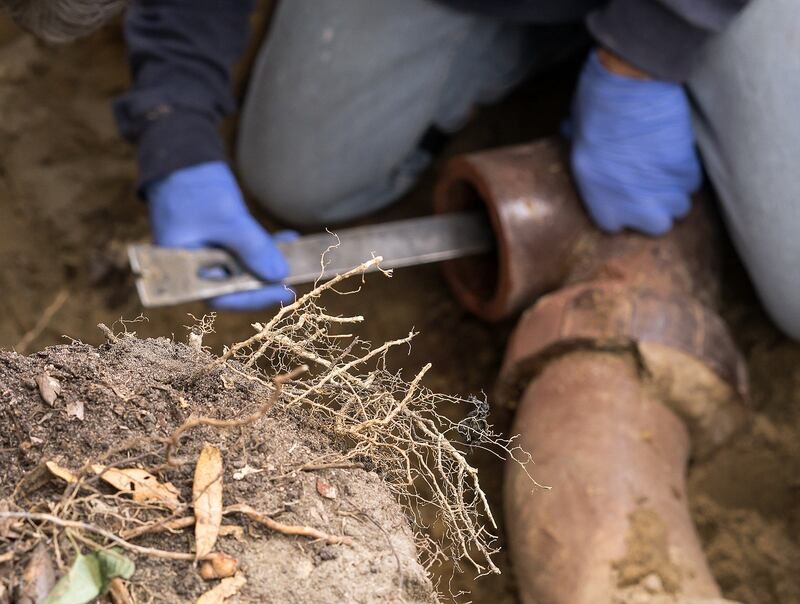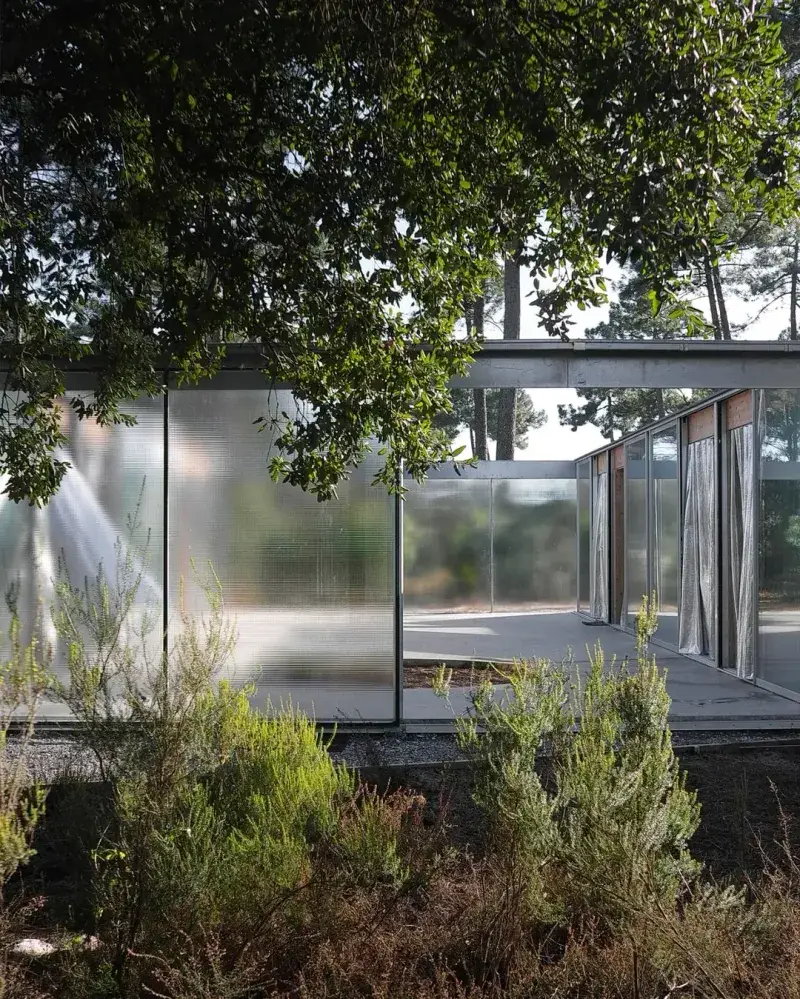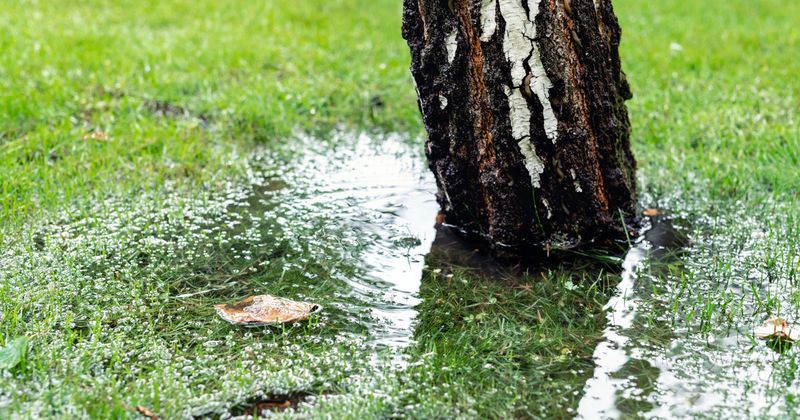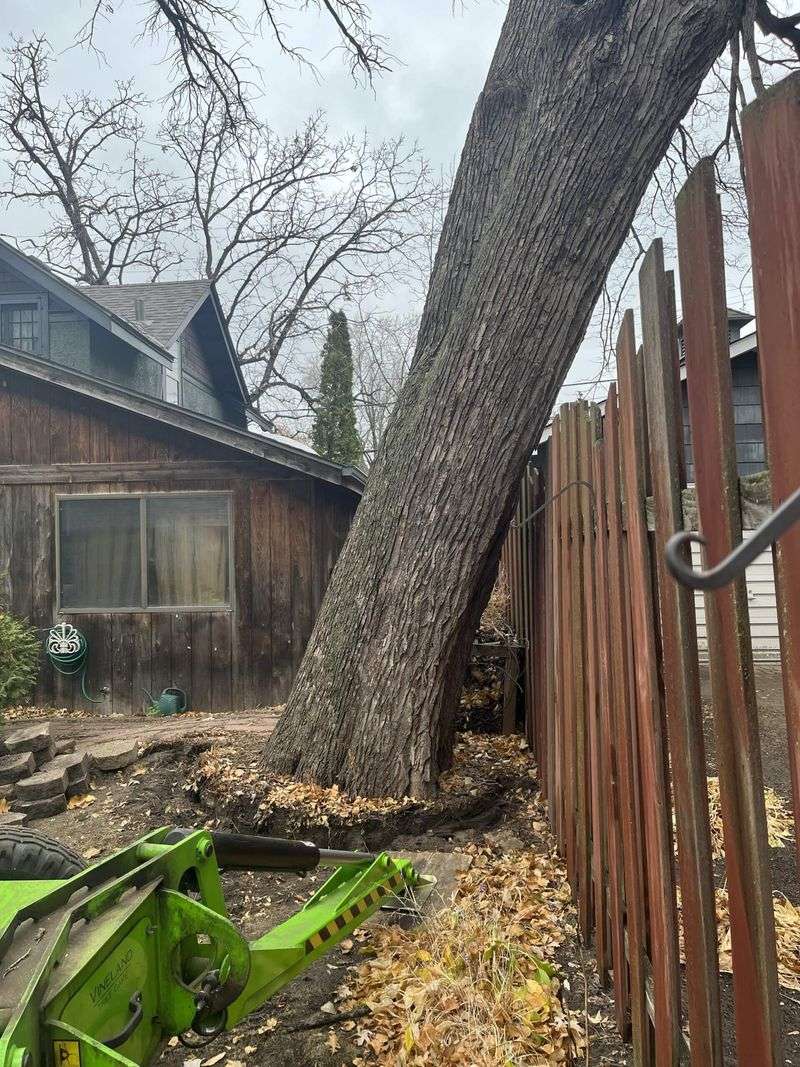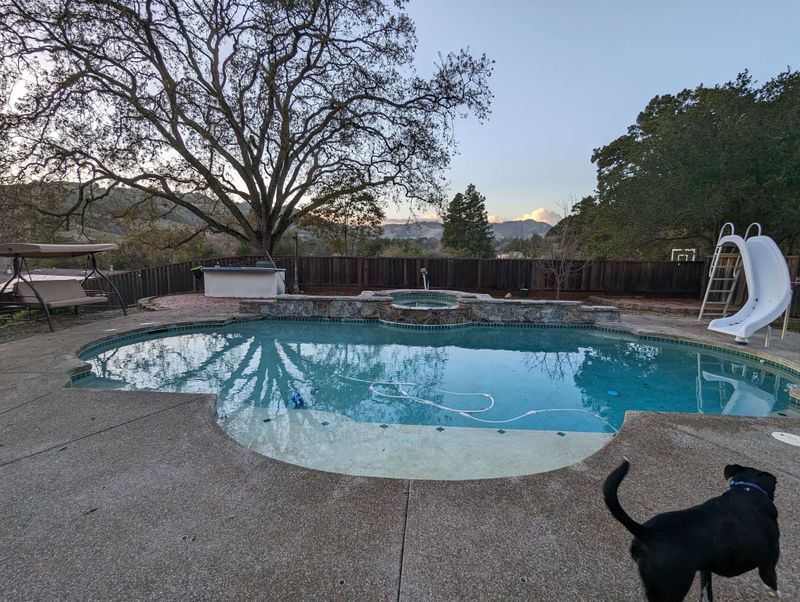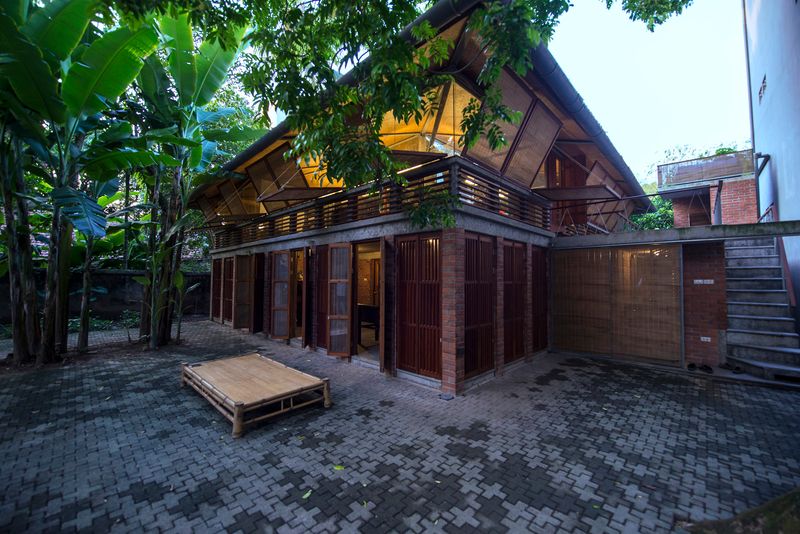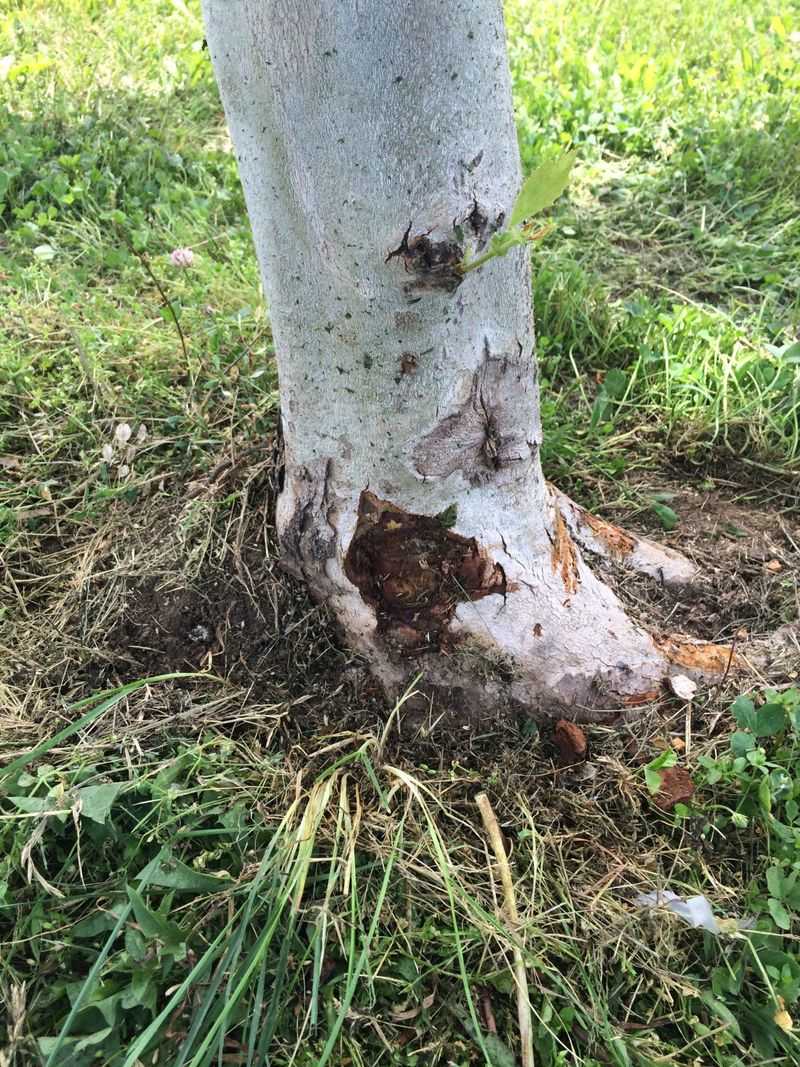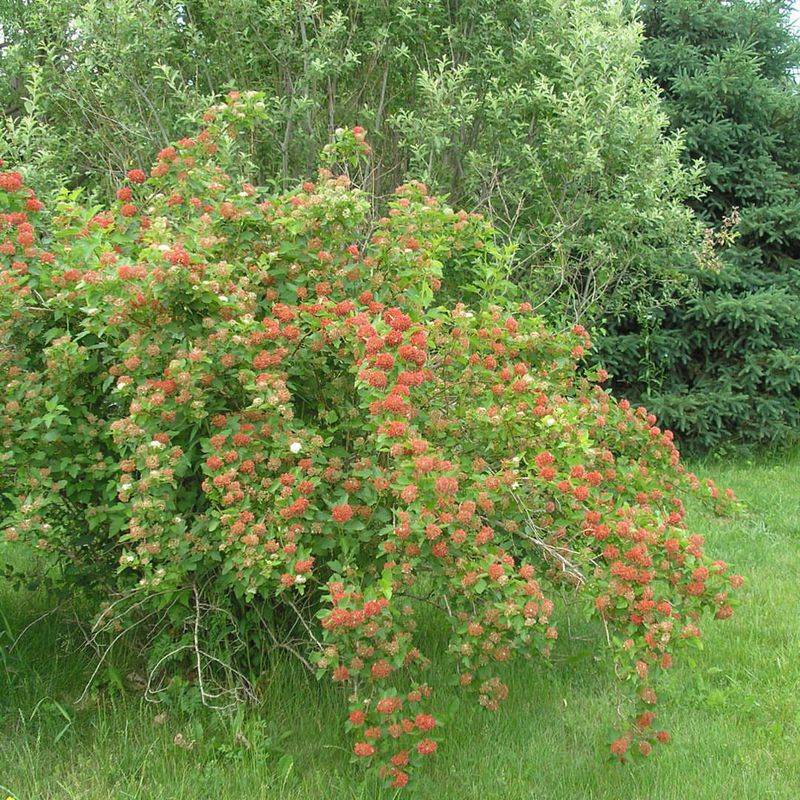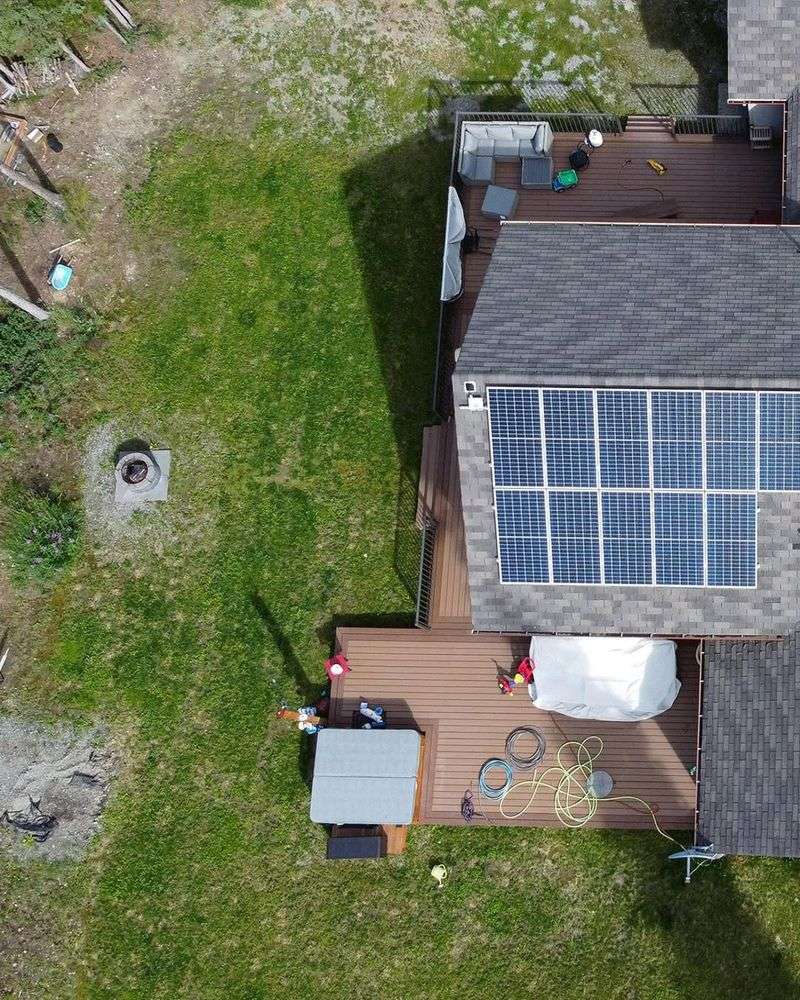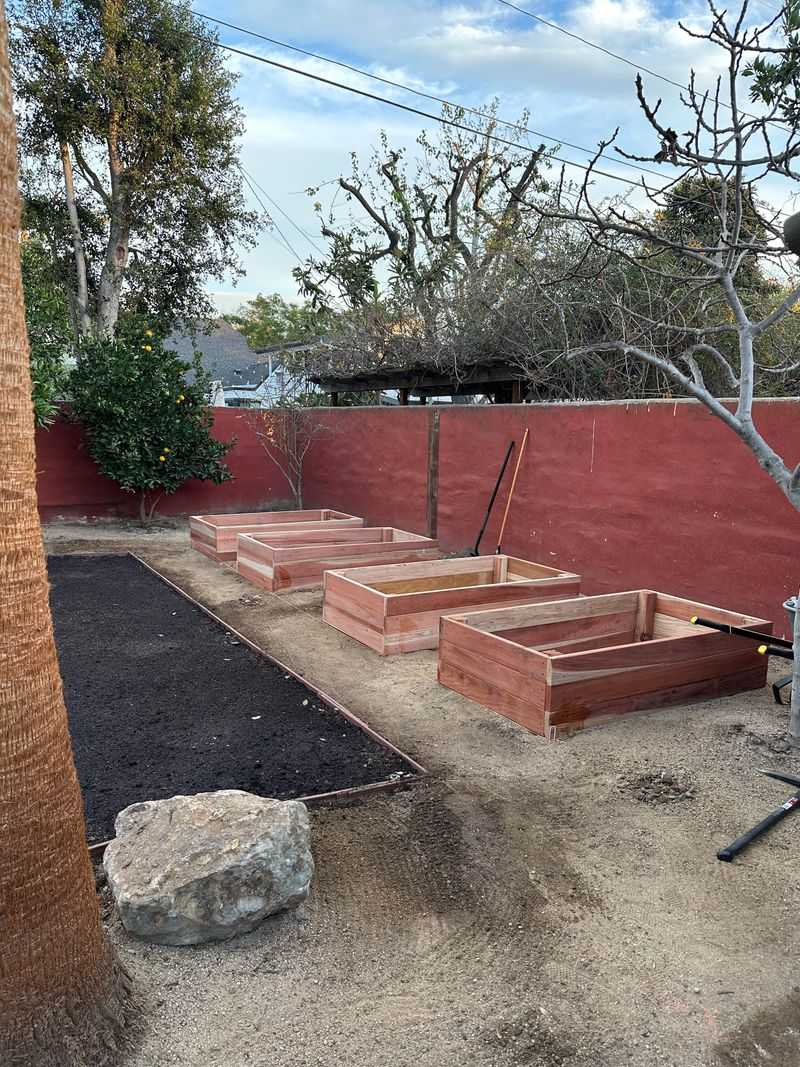Picking the right spot for your tree is just as important as choosing the tree itself. Planting in the wrong place can cause all kinds of headaches—from roots damaging your driveway to a tree that never quite thrives.
Before you dig in, take a moment to think about where your tree will really shine and avoid common trouble spots. Sometimes, the best planting sites aren’t obvious at first. Avoid areas too close to buildings, underground utilities, or tight spaces where roots can cause issues.
Instead, look for open spots with plenty of room to grow and good soil—your tree will thank you later. Getting this right from the start saves you from costly repairs and gives your tree the best chance to flourish. With a little planning, you’ll enjoy shade, beauty, and a healthy yard for years to come.
1. Too Close To Your Home’s Foundation
Those tiny roots you see now will eventually become powerful enough to crack concrete and shift foundations. I’ve watched my neighbor spend thousands repairing foundation damage from a maple that seemed harmless when planted.
The expanding root systems search aggressively for water, often finding their way into tiny foundation cracks and making them worse. Most home builders recommend keeping trees at least 15-20 feet away from your foundation, depending on the species.
Instead, plant your tree in the middle or far side of your yard where it can spread roots freely. You’ll still enjoy the shade and beauty without risking structural damage to your home.
2. Directly Above Utility Lines
Digging without knowing what’s below can lead to dangerous situations and costly repairs. Last summer, a friend accidentally severed a gas line while planting an oak tree, resulting in an emergency evacuation of three houses.
Underground utilities include water, sewer, gas, electric, and communication lines that keep our homes functioning. Always call your local utility marking service before digging – it’s typically a free service that could save you from a disaster.
A better spot would be in areas verified to be clear of underground utilities. Mark safe planting zones after having professionals identify where your utility lines run.
3. Under Power Lines
Growing up, we had a beautiful maple that the utility company eventually butchered into an awkward V-shape because it interfered with power lines. The once-gorgeous tree became an eyesore after necessary pruning.
Mature trees that reach overhead lines create safety hazards and disrupt service during storms. Utility companies must regularly trim these trees, often resulting in odd-looking, unhealthy specimens that never reach their full potential.
Consider planting smaller ornamental trees like dogwoods or redbuds under power lines instead. These naturally shorter species won’t grow tall enough to cause problems while still providing flowers, fall color, and habitat for birds.
4. Too Close To Your Driveway
Surface roots from nearby trees can push up and crack pavement over time, creating trip hazards and expensive repairs. My driveway now resembles a mini mountain range thanks to the maple I planted too close to it fifteen years ago.
As trees mature, their expanding root systems seek water and can extend well beyond the canopy spread. Species like silver maples, willows, and poplars are particularly aggressive, with roots that can travel impressive distances in search of moisture.
A smarter location would be at least 10-15 feet from paved surfaces. If you want greenery near your driveway, consider shrubs with less invasive root systems or trees known for deeper rather than spreading roots.
5. Blocking Security Lighting
Security becomes compromised when trees create dark shadows around entry points or block motion-sensor lighting. The pine we planted near our garage door seemed innocent until it grew tall enough to render our security light useless.
Well-lit areas around homes deter potential intruders and provide safety for residents. Trees that block this lighting create vulnerable spots that can be exploited, especially near doors, windows, and walkways.
Better alternatives include planting trees away from security fixtures or choosing locations that complement rather than obstruct your home’s security features. Low-growing ornamentals or strategic placement can enhance security rather than hindering it.
6. Over Septic Systems
Tree roots and septic systems make for an expensive disaster waiting to happen. We learned this lesson the hard way after a willow’s roots invaded our drain field, causing a backup that ruined our holiday gathering.
Roots naturally seek out water sources, making the moisture-rich environment of septic tanks and drain fields irresistible. Once inside, they can block pipes, damage the tank, and destroy the entire system, leading to repairs costing thousands.
Reserve the area above your septic system for shallow-rooted plants like grasses or certain perennials instead. If you must have trees nearby, choose species with less aggressive root systems and plant them well beyond the drain field perimeter.
7. Blocking Important Views
Young saplings grow deceptively fast, eventually obstructing scenic vistas or important sightlines from your property. The cute little spruce we planted twenty years ago now completely blocks our once-spectacular mountain view.
Visibility at driveways and intersections becomes especially critical for safety reasons. Trees planted near corners can block drivers from seeing oncoming traffic or pedestrians, creating dangerous blind spots that lead to accidents.
Consider planting where growth won’t obstruct important views or sightlines. Alternatively, select species that can be pruned to maintain visibility or choose naturally smaller varieties that won’t grow tall enough to become problematic.
8. Too Close To Other Trees
Overcrowding creates competition for light, water, and nutrients, resulting in stunted, misshapen specimens. My attempt to create a mini-forest in the backyard backfired when none of the trees developed properly due to their proximity.
Trees need adequate space to develop healthy root systems and canopies. When planted too closely, they become more susceptible to diseases and pests as air circulation decreases and moisture levels increase, creating perfect conditions for fungal problems.
Space your trees according to their mature size, not how they look as saplings. Research each species’ expected spread and plant accordingly, allowing trees room to grow into their natural forms without competing with neighbors.
9. In Soggy Areas That Don’t Drain
Standing water spells doom for most tree species, causing root rot and eventual death. The cherry tree I stubbornly planted in that low spot of the yard never thrived, developing yellowing leaves before slowly declining over several years.
Roots need oxygen to survive, and waterlogged soil prevents proper gas exchange. Only specialized species like willows, bald cypress, and river birch have adapted to handle these conditions through specialized root structures.
Choose naturally drier areas with good drainage for most trees. If you want to green up a wet spot, opt for wetland-adapted species instead of forcing standard landscape trees to survive where they’re not suited.
10. Against A Fence Or Property Line
Boundary disputes with neighbors make for uncomfortable conversations when your tree starts dropping leaves, fruits, or branches on their property. The apple tree along our fence line has caused more neighbor tension than any other single issue.
As trees mature, their canopies extend well beyond the trunk location, often crossing property lines. Roots similarly ignore human boundaries, potentially damaging neighboring structures or landscaping as they expand.
Plant trees well within your property boundaries, allowing room for their mature spread. For boundary plantings, consider creating a shared plan with neighbors or stick to smaller ornamental species that won’t become points of contention.
11. Near Swimming Pools
Constant leaf and debris cleanup becomes a never-ending battle when trees overhang pools. My cousin spends hours each week skimming his pool because of an ill-placed oak that seemed so perfect for poolside shade.
Beyond the maintenance headache, falling leaves and organic matter can clog filters, stain surfaces, and alter water chemistry. Tree roots may also eventually damage pool structures as they grow and expand in search of water.
Choose pool-friendly landscaping like ornamental grasses or carefully placed smaller species instead. If shade is your goal, consider pergolas or shade structures that provide relief from the sun without the maintenance challenges of overhanging trees.
12. Directly Below Roof Overhangs
Growth becomes stunted and deformed when trees struggle to reach around roof overhangs for sunlight. The Japanese maple we planted too close to the house now has a bizarre, lopsided shape from years of reaching outward for light.
Branches that rub against roofing materials can damage shingles and create entry points for moisture. During storms, these close-proximity trees become particularly hazardous, with branches potentially damaging windows, gutters, or the roof itself.
A better location would be far enough from the house that the tree can develop its natural, balanced form. Consider the mature height and spread of your chosen species, then add extra distance to accommodate future growth.
13. In Lawn Areas Without Protection
Young trees face constant injury from lawnmowers and string trimmers when planted directly in regularly mowed areas. The scarred trunks of my first landscape trees still show the damage from years of accidental hits during routine lawn maintenance.
These wounds create entry points for insects and diseases while weakening the tree’s vascular system. Many promising trees die prematurely from what arborists call “lawn mower blight” – preventable damage that accumulates over time.
Create protected mulch circles around new trees instead of planting directly in lawn. Alternatively, establish dedicated planting beds where trees can grow without competing with grass or facing mechanical damage from lawn care equipment.
14. In Compacted Soil Areas
Areas with heavy foot traffic or vehicle use create compacted soil that suffocates tree roots. The maple we planted near our frequently used pathway never developed properly, remaining stunted despite adequate water and sunlight.
Compacted soil lacks the air pockets necessary for healthy root growth and proper water infiltration. Roots struggle to expand through these dense conditions, resulting in stressed trees with shallow root systems that are prone to drought damage and instability.
Choose planting sites away from high-traffic areas or invest in proper soil preparation before planting. Dedicated beds with amended soil provide much better growing conditions than spots where people or vehicles regularly compress the ground.
15. Blocking Solar Panels
Energy efficiency takes a major hit when trees cast shadows on solar panels. My environmentally conscious neighbor now faces the ironic dilemma of removing a tree he planted years before installing his solar array.
Even partial shading dramatically reduces solar panel output, as a single shaded cell can affect the performance of an entire panel or string. The southern exposure that makes a location ideal for solar collection is often also perfect for tree growth.
Plan your landscape with future energy needs in mind. Plant trees on the north side of your home where they won’t interfere with potential solar installations, or choose locations that consider the sun’s path throughout the year.
16. Near Vegetable Gardens
Garden productivity suffers when nearby trees compete for resources and cast too much shade. After years of declining harvests, I finally realized my struggling vegetable patch was being strangled by the roots of a nearby oak.
Tree roots extend far beyond their canopy, silently stealing water and nutrients from garden plants. The shade pattern also changes throughout the growing season as the sun’s angle shifts, often creating more shadow than anticipated during critical growing periods.
Establish vegetable gardens well away from existing trees, or choose sunny locations for new trees that won’t interfere with food production areas. Consider raised beds with root barriers if space is limited and gardens must coexist with trees.

